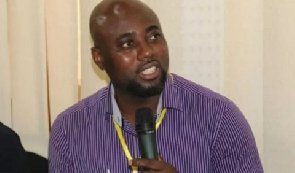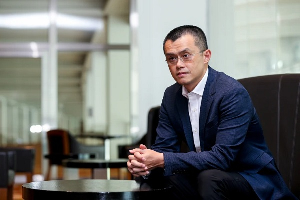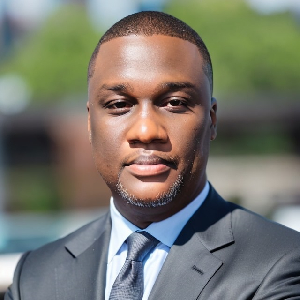- Home - Entertainment
- Lifestyle News
- Entertainment Videos | TV
- Year In Review
- Music News
- Entertainers
- Entertainment Archive
- Entertainment Photos
- Jokes
- Entertainment Headlines
- Ameyaw Debrah
- Brown GH
- Celebrities Buzz
- GH Base
- Ghana Celebrities
- Gh Gossip
- GH Page
- GH Splash
- Hot Gossip GH
- YEN

General News of Monday, 2 August 1999
Source: PANA
Proposal For Third Dam In Ghana Under Fire
by Elily Aggrey
Accra, Ghana (PANA) - Ghanaians have expressed diverse opinions over a government plan to construct a third hydro-electric dam in the country.
Since the plan was unveiled by Vice President John Atta Mills recently, varying sentiments have been expressed by environmentalists on one side and politicians and their supporters on the other.
The 75 million US dollar-Bui dam is to be constructed on the Black Volta, a tributary of the Volta River, that runs through one of the few parks the nation has and is located in the Brong Ahafo Region in the north western part of Ghana.
While environmentalists and energy experts argue that construction of the dam is not the answer to Ghana's energy requirements, government says it would ensure a more constant and adequate supply of electricity.
When completed, the dam is expected to supply about 400 megawatts of power to supplement the more than 1,200 megawatts of electricity being produced by the two dams located on the same Volta River - Akosombo and Kpong Dams.
The government sees this as very important in view of the energy crisis that hit the country last year. Residents in and around the proposed site have also expressed divergent views on the subject through letters in newspapers.
A 1,800 square kilometre-park, known as the Bui National Park, serves as a natural habitat for various animal species, including the larger of the only two populations of about 150 amphibian hippopotamus in the country.
It also serves as a potential boost for the nation's tourism development, estimated to be the third highest foreign exchange earner.
A recent survey by scientists from the University of Aberdeen in Scotland showed that the river flowing through the park "is a habitat of 46 species of fish from 17 families, all of which are of economic importance."
Forest in the area used as spawning grounds for fish would be wiped out while some fish species may even disappear from the river.
The concern of environmentalists is about the environmental degradation associated with the construction of dams in the history of the nation.
Some have written, fearing the fate of the hippos based on initial plans that about 75 percent of the total land area of the park would be submerged.
And even the government's modified decision to submerge only 30 percent still does not allay fears about the negative environmental impact latent in the project.
Apart from the hippos and the fish species, experts say the Bui dam could destroy one of the eight Savannah wildlife protected areas.
Conservationists, therefore, argue that the dam, if constructed, would be a "violation of the principles of bio- diversity conservation."
They warn the government against forceful evacuation of the denizens in the area and remember what happened in the aftermath of the construction of the Akosombo dam, Ghana's first hydro-electric project.
There are also health implications; studies have shown that construction of the dam is expected to alter the wellbeing of the people who will continue to depend on water from the reservoir.
One of such diseases the dam may cause is schistosomiasis (bilharzia) spread through snails.
But the Ghanaian Chief Wildlife Officer, Nick Ankudey, says that the construction would not affect wildlife and their habitat in and around the Bui National Park.
Ankudey wrote in defense of the project that the total land area of the national park is 1,820 square kilometres out of which an estimated 440 square kilometre-lake would be formed.
He said the actual dam would be sited outside the park but along the Bui gorge and would make use of 383 square-kilometre-area of the lake. He believes that the "Bui Park stands to gain far more from the project than if the dam were not to be built."
"The financial arrangements proposed for the Bui project will give us the opportunity to develop, protect and run the Bui National Park better than has been possible as of now.
"I believe a Bui lake mostly surrounded by a protected area where there are no settlements along the shores, offers vast opportunities to demonstrate how we should not repeat the mistakes of the Akosombo Volta dam."
He added that the fate of the wildlife would not be endangered seriously. But it behooves the government to look at alternative sources such as solar and biogas as many countries are shedding dams for that direction to produce electric power.
Indications are, inspite of the arguments, that the government is determined to go ahead with the construction of the dam since it has invited private foreign investors to undertake the project.










